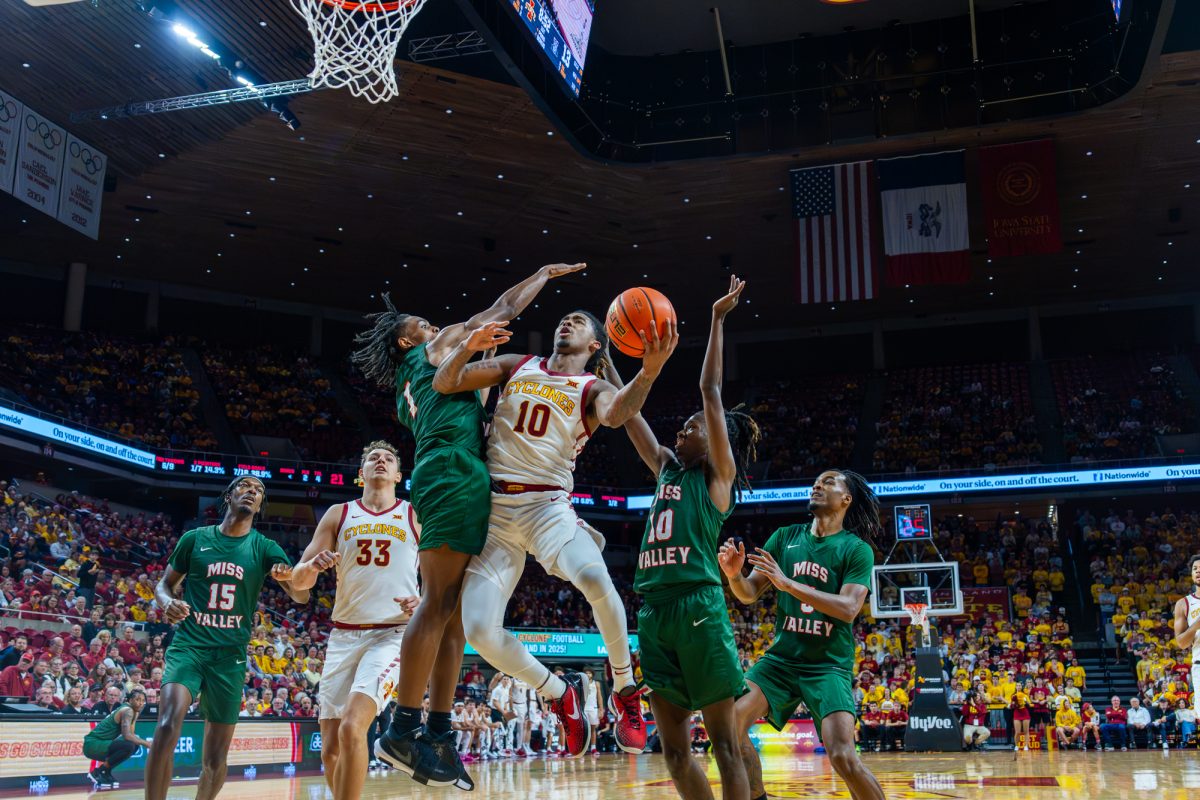Learning to stop
February 18, 1998
“Ooo, that had to hurt.”
This is a by now familiar comment I hear far too often from fellow students in my 2:10 p.m. MWF class. Three times a week, we come together for PE 153. Ice skating.
Before this semester, I had only skated once before. It was on a bumpy, frozen lagoon using old, oversized skates. Despite the technical hindrances (and the fact that I’m largely ungraceful and klutzy), I only fell down once, and it hardly hurt at all.
It was pretty cool. Maybe, I thought, I’m really a skating genius, but I just haven’t realized my potential yet because I’ve only ever skated once in my life. If given the chance, I could dazzle the world with my stunning ability. But even with my extremely loose interpretation of the term “genius” this seemed rather unlikely. So I forgot about skating for a while.
Then, my parents volunteered to give me rollerblades for my birthday. They’d remembered my excited gibbering about the ice skating incident and thought perhaps they could encourage me to take up a little hobby.
My parents tried desperately throughout my rearing to encourage some sort of hobby by way of piano lessons, dancing lessons, art supplies, sports teams, etc. But alas, for the most part, my laziness and tendency to pursue things half-heartedly won out over their noble efforts.
This new skating thing might prove to be profitable if played right, they must’ve reasoned. Since there are no ice rinks in our general vicinity, and we’ve no access to reliable frozen ponds, rollerblading seemed the practical way to go. The skates and all the accompanying protective gear (safety first, kids) were purchased, and I was ready to roll. (Sorry, but you can’t honestly expect me to avoid all the stupid puns.)
As it turns out, rollerblading proved to be only slightly more practical than ice skating since living in the country as my family does meant I had limited access to paved surfaces. My blades were thus reserved for open gym nights at the school and church picnics conveniently located by a highway.
I wonder, however, if I mightn’t have been motivated to transport my skates to a more accommodating terrain if it weren’t for an essential logistical problem I have with skating.
I can’t stop.
I first became aware of my inadequacy in this area during the annual roller skating sessions at my school. We would roller-skate in the gym for P.E. a few weeks every year, courtesy of a batch of skates from the Area Education Agency or somewhere.
I always loved this activity, skating around the good ol’ gym with the radio singing to me and my friends. I was pretty good at it too. (With the exception of a few memorable instances, such as the time I was trying to show my skatingly-challenged friend how to cross her skates going around the corners and caught my wheels together on the straightway, launching myself into the air and landing flat on my face because my hands were in my pockets and therefore unable to break my fall. That hurt a bit, especially because contact with the floor imbedded my wristwatch directly into my hip.)
My biggest problem wasn’t coordination; it was stopping. At that time, this wasn’t even such a big problem because, if you’ve never noticed, gymnasiums generally have walls. And where there are walls, there are adequate ways to stop.
To get back to rollerblading, you may or may not have noticed that outside, in open spaces where one usually conducts rollerblading, there aren’t many walls around. And when you do find walls, they’re often surrounded by fences, mulch and/or shrubbery. When one’s intention is to crash into the wall in order to stop, things like this tend to create obstacles. I discovered this when I got to ISU and the abundance of pavement lured me on to the street with my rollerblades again.
I’ve found that trying to skate outside when you can’t stop is either astoundingly dull (because you can’t safely go over roughly one inch per minute) or overwhelmingly exciting (because you end up setting the landspeed record for multi-wheeled conveyances manned by foolish novices).
Shooting out across traffic, swinging around lampposts, crash-landing in driveways and rolling head-over-heels across lawns is somewhat exhilarating, but also somewhat painful. Although I’ve never actually “broken” anything or “required professional medical attention,” the whole bit is a little too like an Evel Knievel routine for me.
In hopes of saving my rollerblades from back-of-the-closet exile and myself from multiple injuries and certain death, I enrolled in PE 153 this semester. It can (safely) improve my sad excuse for skating technique. It has walls — a plus, I reasoned. No trees, driveways or cars. And working on ice, as opposed to scraping, there’s mostly bruising that goes on (which I personally prefer). If I just keep my hands out of my pockets, I should be fine.
Mostly this has proved true. I still haven’t learned how to stop, but prompted by my teacher’s tireless insistence that we all acquire this skill, I’m working on it. Unfortunately, my classmates are forced to watch my pathetic attempts. An hour a day, three times a week, they have to watch me crash into the boards, trip over my skates, slide across the ice on my back and torture my poor bruised body.
But, one day my classmates will be glad they took PE 153 with me. When my true skating genius manifests itself, and I am a world class skater, they’ll look back on the silly trials of my early skating and laugh in appreciation of how far I’ve come.
In fact, I bet they’re laughing already.
Juli Hisel is an undeclared sophomore from Richland.






